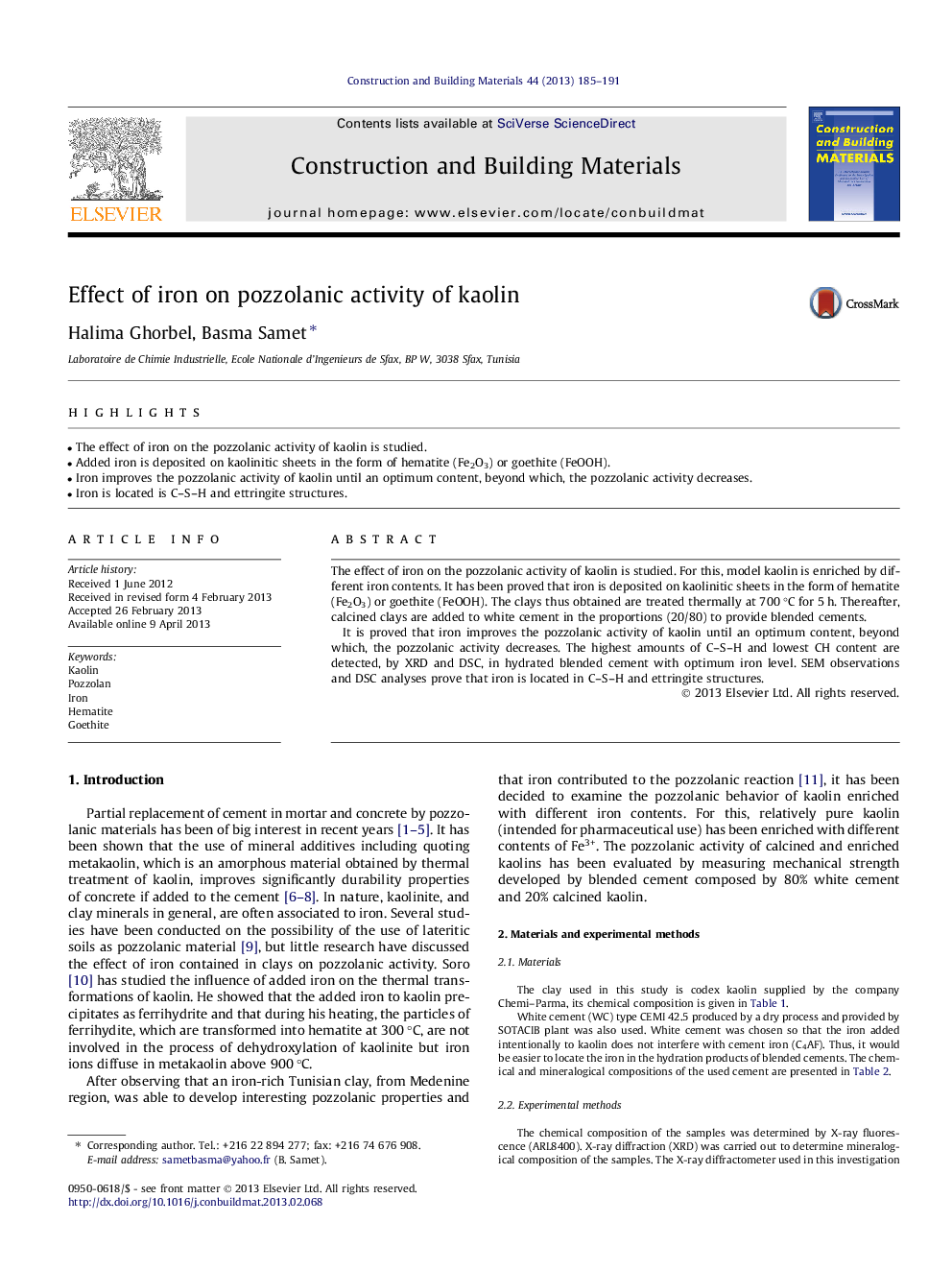| Article ID | Journal | Published Year | Pages | File Type |
|---|---|---|---|---|
| 258056 | Construction and Building Materials | 2013 | 7 Pages |
•The effect of iron on the pozzolanic activity of kaolin is studied.•Added iron is deposited on kaolinitic sheets in the form of hematite (Fe2O3) or goethite (FeOOH).•Iron improves the pozzolanic activity of kaolin until an optimum content, beyond which, the pozzolanic activity decreases.•Iron is located is C–S–H and ettringite structures.
The effect of iron on the pozzolanic activity of kaolin is studied. For this, model kaolin is enriched by different iron contents. It has been proved that iron is deposited on kaolinitic sheets in the form of hematite (Fe2O3) or goethite (FeOOH). The clays thus obtained are treated thermally at 700 °C for 5 h. Thereafter, calcined clays are added to white cement in the proportions (20/80) to provide blended cements.It is proved that iron improves the pozzolanic activity of kaolin until an optimum content, beyond which, the pozzolanic activity decreases. The highest amounts of C–S–H and lowest CH content are detected, by XRD and DSC, in hydrated blended cement with optimum iron level. SEM observations and DSC analyses prove that iron is located in C–S–H and ettringite structures.
